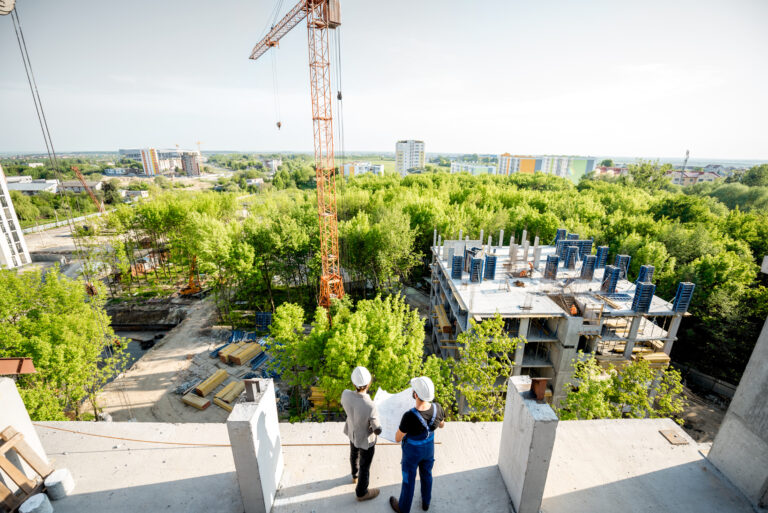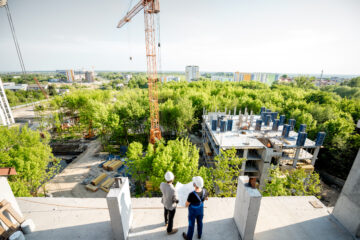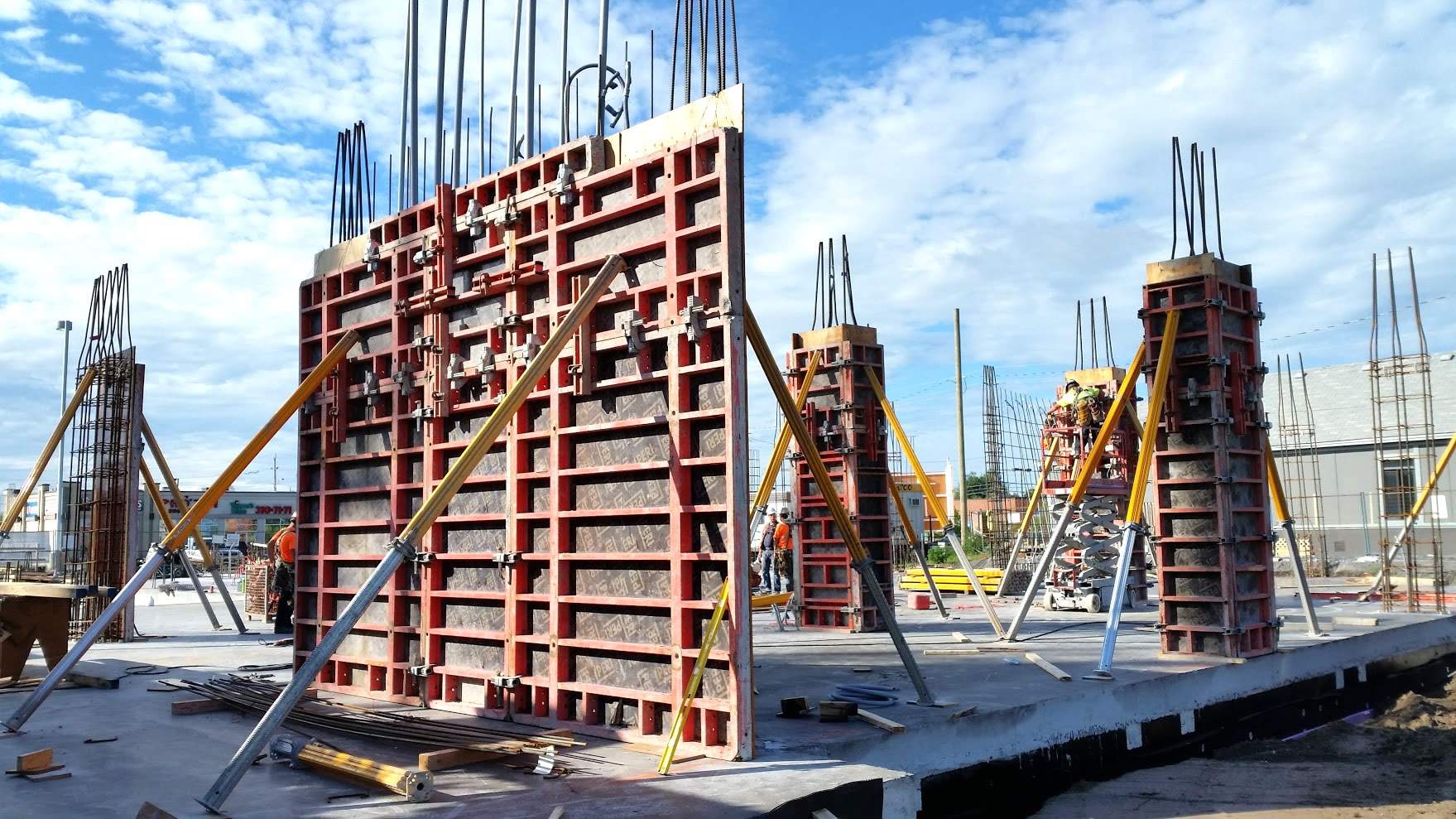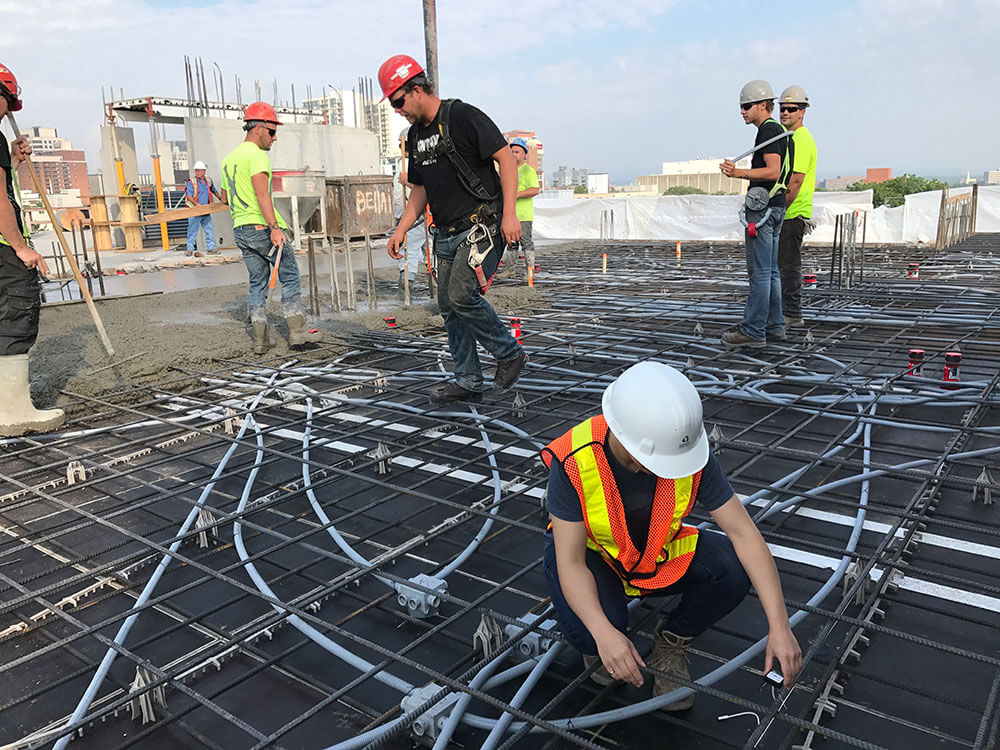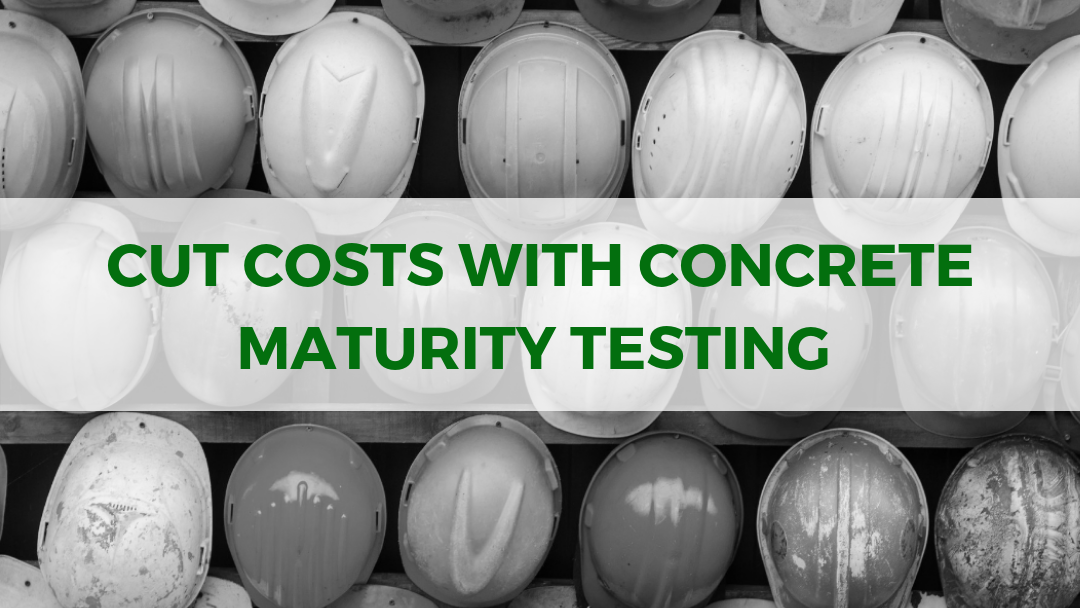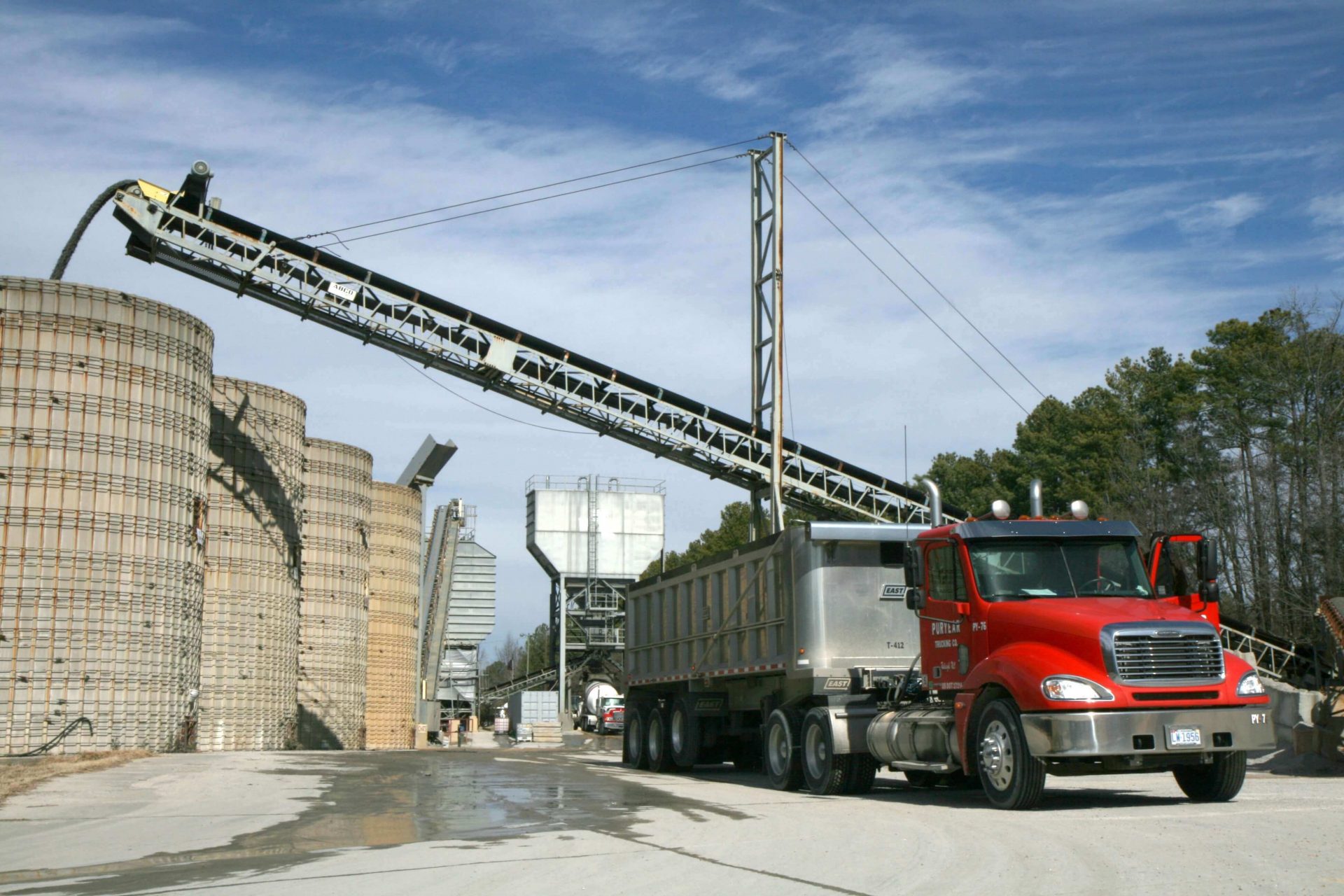Concrete production is essential to infrastructure development, but its environmental cost is significant. While construction industry contributes to 11% of global CO2 emissions, concrete is responsible for most of that (i.e. 8%). If it was a country, concrete would have ranked 3rd after US and China in terms of global GHG emissions. The majority of CO₂ emissions in the industry stem from the manufacturing of cement, specifically during the calcination of limestone in kilns and the combustion of fossil fuels. Each ton of cement produced generates nearly a ton of CO₂, making it a substantial contributor to global warming.
Explore 12 Futuristic Technology Trends Solving Concrete's Biggest Challenges.

This challenge is compounded by:
- Increasing Urbanization: The demand for concrete is projected to grow, especially in developing regions.
- Regulatory Pressures: Governments are imposing stricter carbon reduction targets.
- Market Demand for Sustainability: Developers and architects are increasingly seeking materials with lower carbon footprints to meet green building standards like LEED and WELL certifications.
The urgency to address CO₂ emissions has driven the industry toward innovative solutions, with Environmental Product Declarations (EPDs) emerging as a cornerstone of transparency and accountability.
Role of Environmental Product Declarations (EPDs)
Environmental Product Declarations (EPDs) serve as a powerful tool to improve transparency in the environmental impact of concrete products. Similar to the nutrition labels on food that provide for example the amount of sugar intake per serving, these standardized EPD documents provide quantifiable information on the environmental performance of a product across its life cycle, including Global Warming Potential (GWP) that is measured in CO2 equivalent weight.
Key benefits of EPDs include:
- Transparency for Stakeholders:
- EPDs allow architects, engineers, and policymakers to evaluate the environmental footprint of concrete mixes, enabling informed decision-making.
- Compliance with Green Building Standards:
- Green building certifications often reward projects that utilize materials with verified EPDs.
- Benchmarking and Continuous Improvement:
- By comparing EPDs across products and regions, producers can identify areas for reducing carbon emissions.
The development of EPDs also aligns with government initiatives such as the Inflation Reduction Act (IRA) in the U.S., which incentivizes low-carbon material adoption through federal funding.
Developing an EPD: Key Steps
Creating an EPD involves several critical stages, each aligned with international standards such as ISO 14040, ISO 14025, and ISO 21930.
- Life Cycle Assessment (LCA):
- An LCA examines the environmental impacts of a product from raw material extraction to production (cradle-to-gate) or even to disposal (cradle-to-grave).
- For concrete, key life cycle phases include raw material supply (A1), transportation (A2), and manufacturing (A3).
- Indicators such as GWP, energy demand, and water use are calculated using methodologies like TRACI (Tool for the Reduction and Assessment of Chemical and Other Environmental Impacts).

- Data Collection and Verification:
- Data is collected on raw material sourcing, transportation logistics, production energy consumption, and waste management.
- This phase requires collaboration between manufacturers, material suppliers, and LCA consultants.
- Compliance with Standards and PCRs:
- The Product Category Rules (PCRs) provide specific requirements for EPDs in the concrete sector, ensuring uniformity and comparability.
- Third-Party Verification:
- Independent verification of the EPD ensures accuracy, credibility, and compliance with international standards. This is typically conducted by certified EPD verifiers or organizations such as NSF International.
- Publication and Accessibility:
- The verified EPD is published, often through program operators like the National Ready Mixed Concrete Association (NRMCA), making it accessible to industry professionals and public procurement agencies.
Example – How to Read and Interpret an EPD
Here is an example of an EPD developed for a 5,000 psi concrete mix from Central Concrete Supply Company in California, US. It shows that the global warming potential for this mix is 254 kg CO2-eq per 1 cubic meter of concrete (or 194 kg CO2-eq per 1 cubic yard of concrete). This EPD was developed by Climate Earth under the ASTM as the program operator.

Benchmarks and Carbon Reduction Strategies
Benchmarking provides concrete producers with critical insights into the performance of their products relative to industry averages. It highlights opportunities to improve carbon intensity while maintaining performance and durability.
Looking at the benchmark data published by Building Transparency Org, this mix design fits well below the average CO2 footprint in the market for similar strength category of mixes with a 20-80 percentile GWP of 298.8 to 479.6 kg CO2-eq per 1 cubic meter of concrete, respectively.

It also meets the NRMCA benchmark data per below table where the average EPD for a 5,000 psi mix is 288.90 kg CO2-eq per 1 cubic yard of concrete. So, this mix would be acceptable from the EPD requirements set for construction projects that require showing reduction in CO2 footprint compared to regional benchmarks.

Five Key Strategies to Reduce Concrete Carbon Emissions
The concrete industry’s journey toward reducing its carbon footprint involves targeted actions in material selection, mix design, energy efficiency, and policy frameworks. Here’s an in-depth look at these strategies and how they contribute to a more sustainable future.
- Material Substitution
Replacing high-clinker Portland cement with low-carbon alternatives significantly reduces emissions. Blended cements like Portland-Limestone Cement (PLC) cut CO₂ by up to 10%, while SCMs like fly ash, slag, and silica fume replace up to 50% of cement, improving sustainability and durability. Emerging options like alkali-activated binders and geopolymers offer additional low-carbon solutions, making material substitution a key strategy for greener concrete.
- Energy Efficiency
Energy efficiency is critical for reducing emissions in cement production. Upgrades like preheaters, precalciners, and waste heat recovery systems lower energy use, while alternative fuels like biomass and hydrogen replace fossil fuels. Increasing use of renewables, such as wind and solar, in concrete plants further cuts emissions and aligns production with sustainability goals.
- Use of Supplementary Cementitious Materials (SCMs)
SCMs like fly ash, slag, and silica fume are essential for reducing cement use and emissions. These byproducts replace up to 50% of traditional cement, improving workability, durability, and chemical resistance. Innovations like calcined clays expand SCM options, promoting a circular economy while enhancing concrete’s environmental performance.
- Improved Construction and Mix Design Practices
Optimizing mix designs reduces overdesign, cutting unnecessary cement use and emissions. Advanced modeling and performance-based specifications help meet structural needs efficiently. Admixtures like superplasticizers enhance workability and strength with less cement, while better curing and quality control minimize waste and extend concrete durability.
This is a low-hanging fruit when it comes to reducing the CO2 emissions in the concrete industry as most of concrete mixes are overdesigned. A recent study by MIT showed that based on industry data, a 5,000 psi mix has about 20% more embodied CO2 that it should if it would have been designed reasonably.

- Policy, Collaboration, and Carbon Sequestration Technologies
Policies like low-carbon procurement and carbon credits are driving sustainable concrete adoption. Technologies like CO₂ mineralization sequester carbon during curing while enhancing concrete strength. Collaboration through shared EPDs and benchmarking enables transparency and progress, helping the industry align with global climate targets. More and more governments are enforcing EPD guidelines that will drive the adoption of low-carbon concrete materials. Here is the map of the regions in the US and Canada that have EPD requirements:
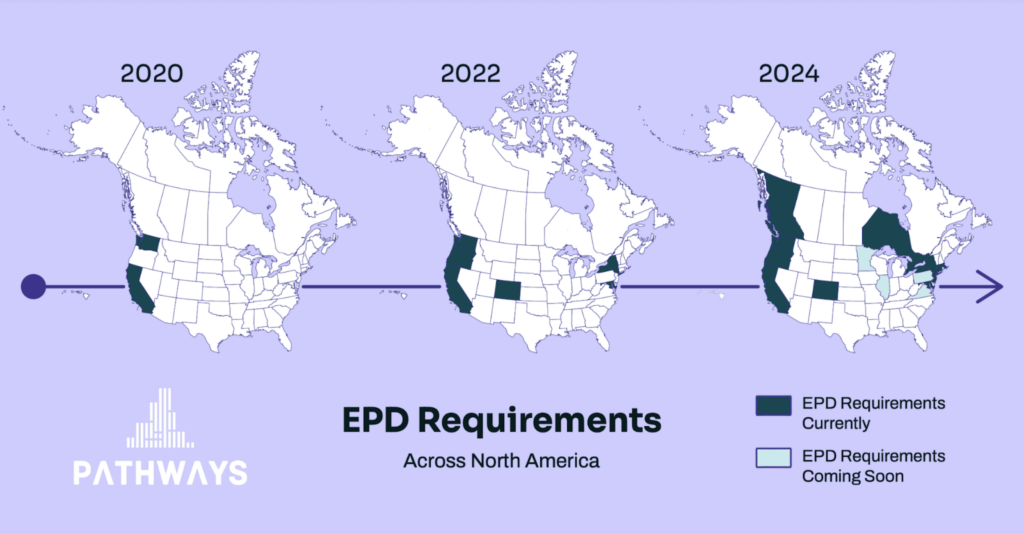
In particular, for example, State of New York has published the Buy Clean Concrete mandate for State agencies that requires “Starting January 1, 2025, EPDs must be submitted for all concrete mixes used in qualifying state construction projects and must demonstrate that they achieve an environmental impact below the limits set by New York State.”
In Canada, the government has published the Standard on Embodied Carbon in Construction that mandates “The total project GHG emissions from ready-mix concrete shall be at least 10% less than those calculated using the GWPs of the baseline mix in the Regional Industry Average Environmental Product Declaration (EPD) for the strength class of each mix and the volume of mix placed.”
The concrete industry’s carbon footprint represents both a challenge and an opportunity. EPDs are pivotal in driving transparency and innovation, enabling producers to reduce their environmental impact while meeting market and regulatory demands. By adopting proven strategies and embracing collaborative efforts, the industry can play a transformative role in achieving global climate goals. Through EPDs, LCAs, and the integration of sustainable practices, the path to net-zero concrete is becoming clearer.

